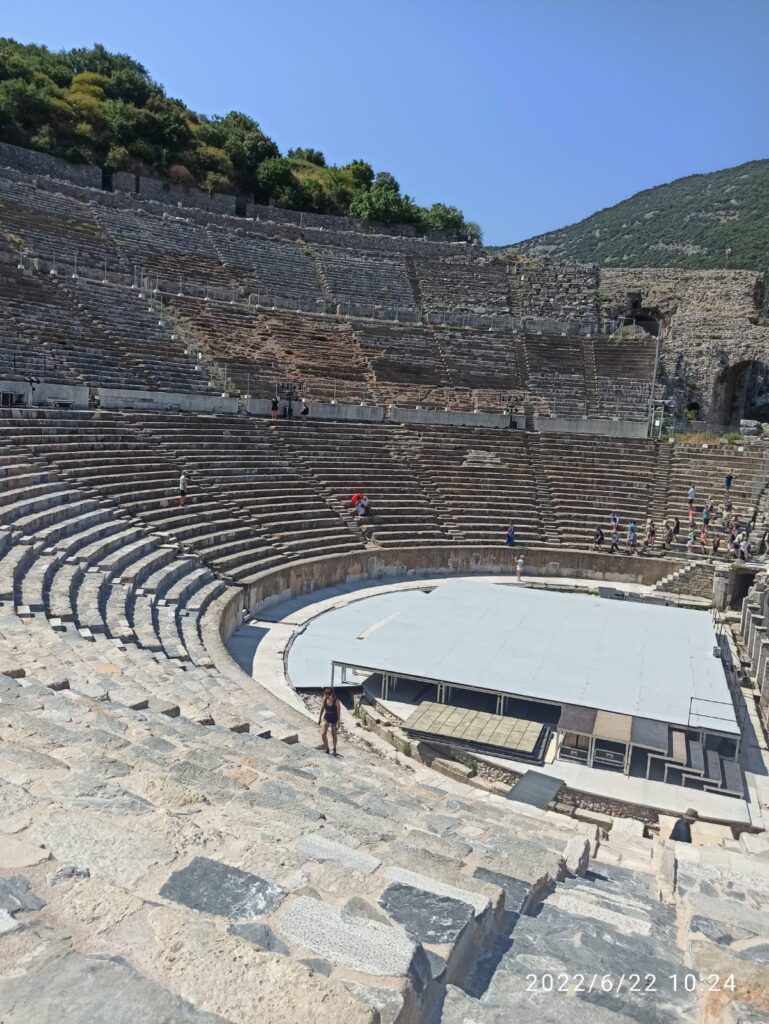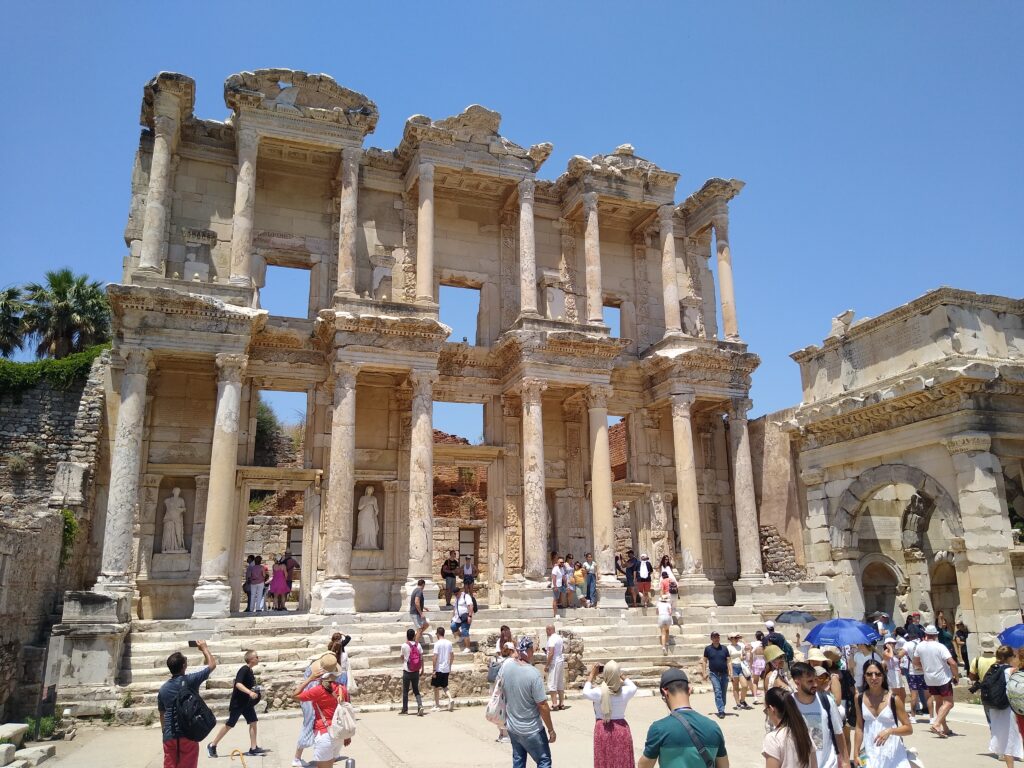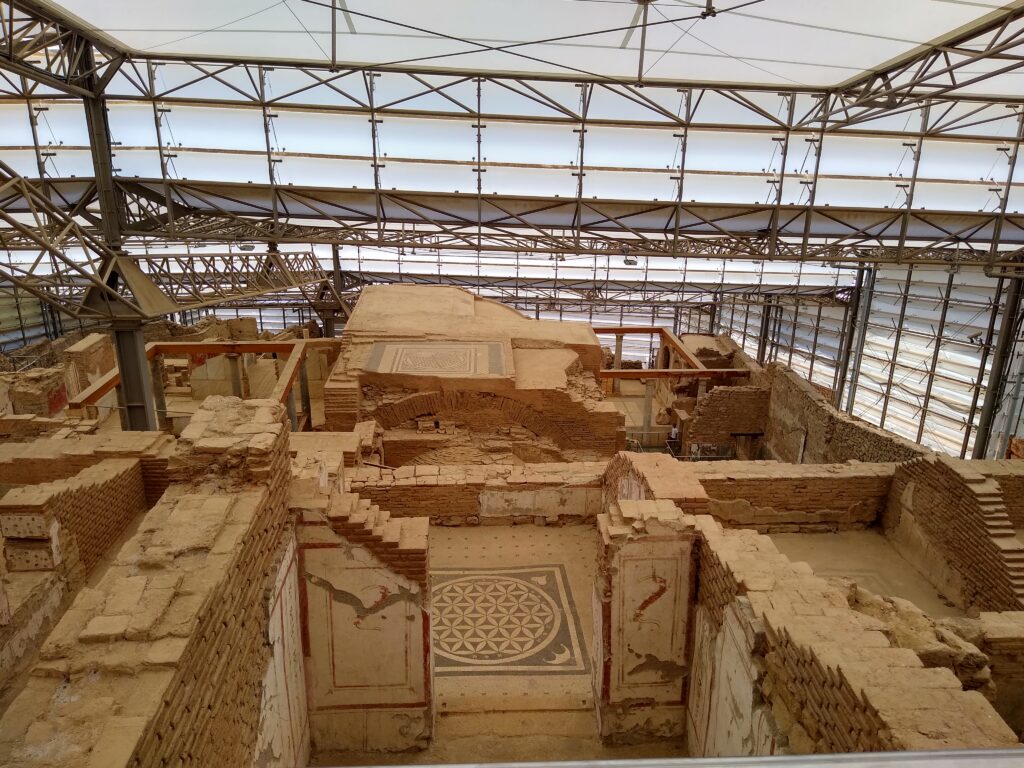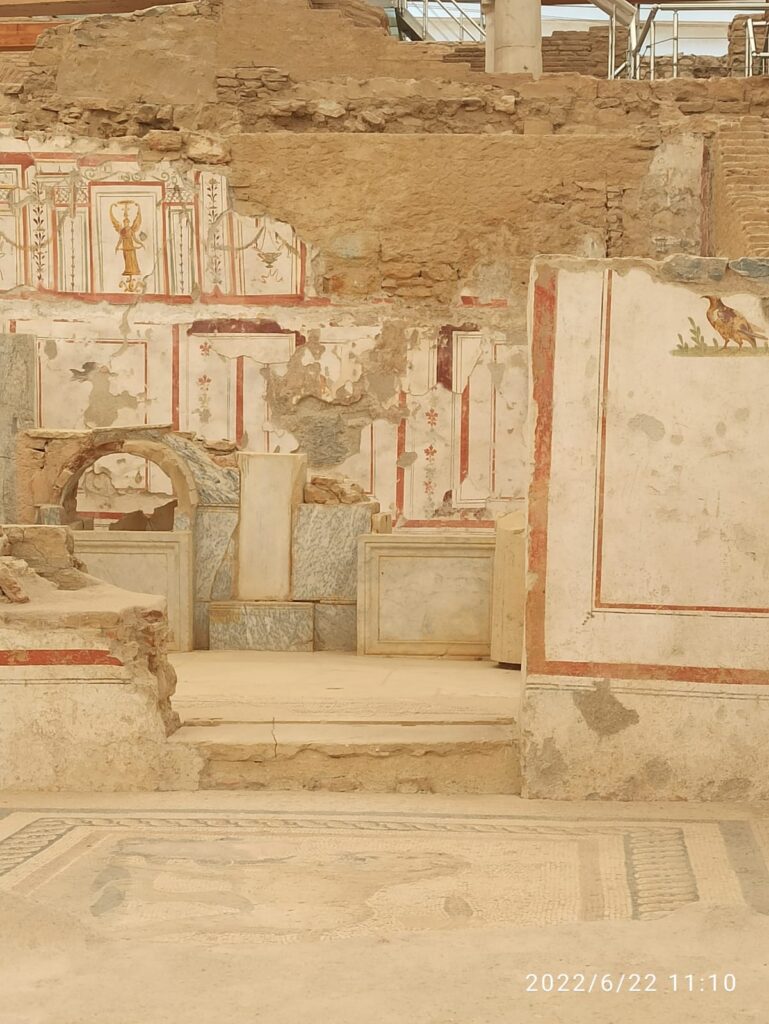A trip to the ancient city of Ephesus
Written by George Peckham, ITP Assistant
In June 2022, I went on holiday to the the resort town of Kuşadası, Turkey. While I was there, I couldn’t miss the opportunity to visit the ancient city of Ephesus (Efes)!
Ephesus was a short bus ride away from where I was staying. It was a sweltering hot day, so lots of water and sun cream was packed for my visit. The bus stopped for Ephesus in what felt like the middle of nowhere. We walked down a quiet road until finally we reached the ruins of the ancient city.
The city of Ephesus was an important port city and hub for trade, both in the Hellenistic period and the Roman empire. It came to prominence under the ancient Greeks, who built the famous Temple of Artemis – one of the seven wonders of the ancient world. When Ephesus came under Roman rule, the city became the capital of the Asia Minor region of the Roman Empire.
Walking through the remains of the city, it is amazing to see how much of Ephesus has survived. The first thing which immediately catches your eye is the huge amphitheatre which dominates the landscape. With an estimated capacity of 25,000, the theatre is believed to be the largest of the ancient world. It would have been used for drama, but later also for gladiatorial combat. Today, the theatre is still used for musical and dramatic performances.


Another eye-catching structure as you walk around the site is the Library of Celsus. The library, which would have a one time housed over 12,000 documents, has a beautiful facade which was reconstructed in the 1970s using fragments of the original building. It was definitely the most popular part of the site with tourists, with lots of people taking the chance to walk into the remains of the library.


As you continue to walk around Ephesus, you come across a modern looking structure which sticks out amongst all the ancient ruins. Walk inside and you discover that this structure is protecting a block of Roman private residences, called the Terrace Houses. Excavation work on the terrace houses began in the 1960s, which revealed a series of luxurious Roman villas. The houses are amazingly well preserved, with decorations highlighting that the owners of these homes were wealthy. Wall paintings and intricate mosaics decorate the interiors. The paintings and some evidence of graffiti offer insights into the lives of the inhabitants.


Everywhere you look around Ephesus there is something interesting to explore. There’s a smaller theatre which would have once had a roof; there are the remains of temples, the most impressive of which was the Temple of Hadrian. There are several bath complexes, aqueducts systems, two large agoras, and even more to see. It’s amazing how much of Ephesus has been excavated and restored, you could spend a whole day getting lost exploring all of its fascinating features.

